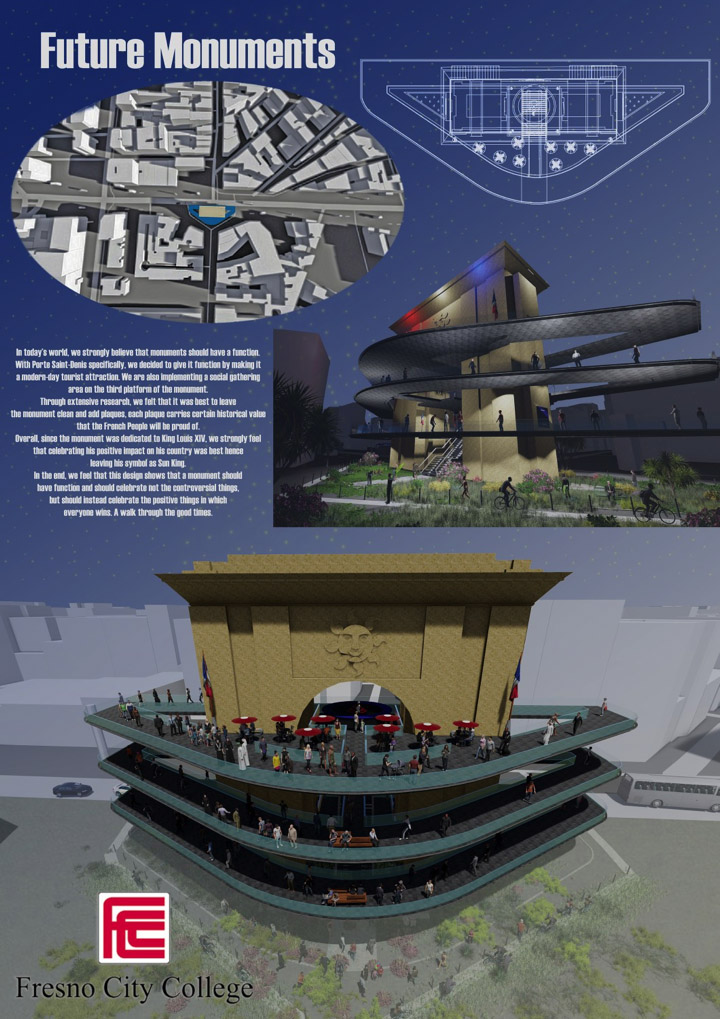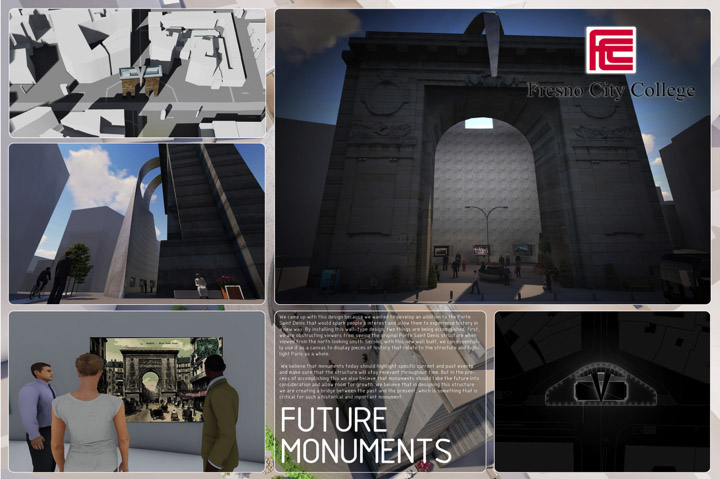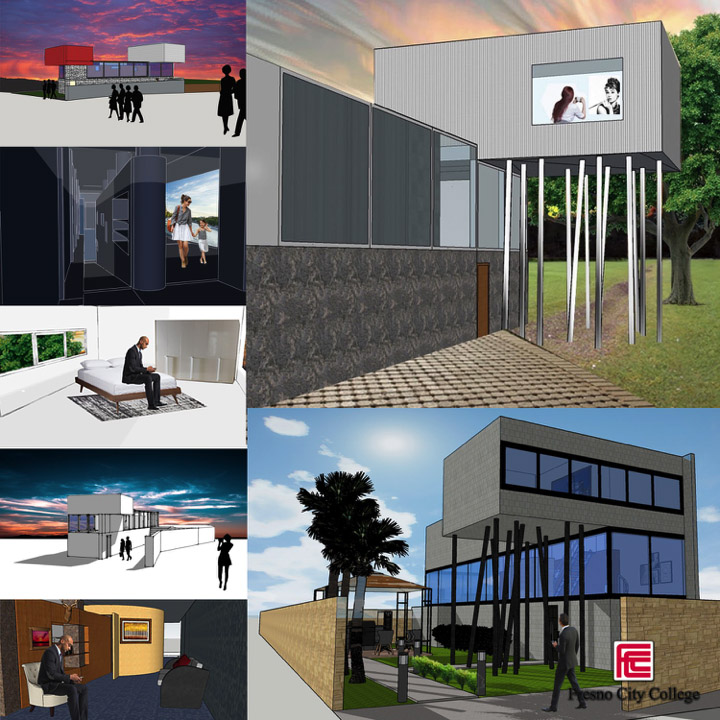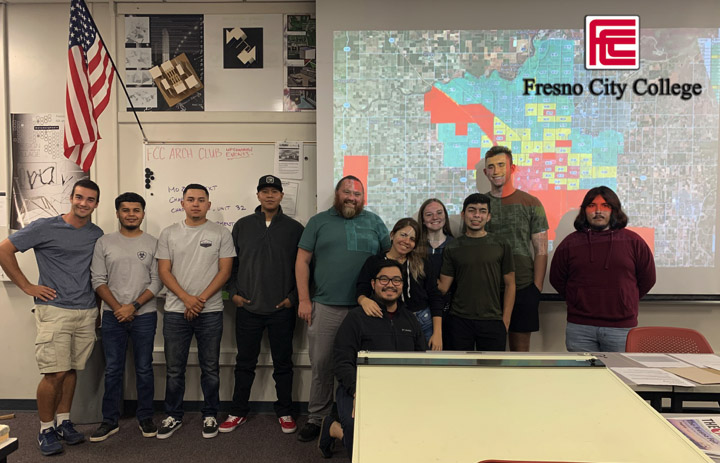
Earlier this week, in remarks honoring the 2020 American Institute of Architects Gold Medal Recipient, Marlon Blackwell, Thom Mayne said:
“Marlon teaches, as do I, because of the great sense of responsibility to add a measure of reality to the education of architectural students while also supporting the theoretical or less pragmatic aspects of their education.”
In reading the nomination for the outstanding Marlon Blackwell and familiarizing myself with his work and design process, I read this quote and it inspired me to share a bit as to why I commit myself to teaching amidst a very busy career in practice. To be honest, it’s not easy, it takes a tremendous amount of energy and time in preparing and requires empathy. I have to reminding myself weekly that its not an easy and clear path when you are college student studying architecture and its important for students to have competitive skill and confidence when they matriculate to architecture schools for their bachelor’s or master’s degrees. It gets even more challenging when students, like mine at Fresno City College, are in a Junior College program often unsure of where they want to be or what direction to take for their degree in architecture.
When I read Mayne’s comments and read about Blackwell’s career contributions, it gave me some clarity as to why I find the commitment to teaching to be a valuable commitment. I too feel this “sense of responsibility.” By teaching, we are investing in the future generation that will – as we do now – give shape to our cities and our communities.
Yes, it’s a great feeling to design, create and build as an architect. I can’t imagine that will ever get old for me. I love it and live it! Teaching however, provides a different sense of fulfillment. One that is similar to the way setting money aside to invest provides fulfillment. The intuitive thing is to use money immediately for something necessary or desired. However, when we invest, we are acknowledging that there’s greater value this money will have in the future than it may right now. Teaching feels to me similar. Would I rather invest more time in my own work? Sure, but there is something that feels right about taking a bit of time away from practice and lifting up others. By doing so, there’s greater hope that some of these talented students will return to Fresno and continue to make the Central Valley a more sustainable and even more exciting city.
This week was the final week of the Fall Semester. Students in my Arch34 class have been building skills throughout the semester in modeling, graphic representation and rendering. Here are a few short paragraphs describing our process, what and how we learned and developed skills. The primary software’s they learn are Sketchup, Lumion, Photoshop and Illustrator. For the final four weeks, they have been working on their final project – a competition for the Paris Architecture School’s Future Monuments project that asks students to evaluate: “What is the role of the Monument in 2020?” Using the monument at Porte Saint Denis in Paris, they are free to modify, add, subtract, surround, etc.
Our process was fairly common for those familiar with the architectural design process. Three teams each worked together to first come up with a few conceptual ideas each. Teams mostly used Sketchup and sketching to develop their very first ideas over a quick two hour session. We put the ideas up on the wall, gathered and discussed the strengths and weaknesses of the ideas. They then went back into their groups, refined their ideas working to combine the strengths of the ideas into common team concept. At this stage, teams were asked to write a first draft of their design abstract. Understanding that this is an important element, for making a case for their design project, but also a great tool in helping them to have clarity about what they are doing and why. Between our weekly meetings, the teams worked a bit outside of studio to start to develop what their team’s design will look like architecturally. Teams all came to studio the next two weeks with digital models and printouts of their evolving designs.
By the second week of this four week project, students built a sketch model to use as a three-dimensional tool for scale and context. By the middle of our second studio meeting, students were wrapping, attaching to, floating and placing their design ideas on and around the sketch model to help explain and defend their ideas amongst their classmates.
For the last two weeks, they focused on modeling and rendering. Iterations of their projects would be printed, taped up on the wall and we would gather to talk through some of the details and where individuals can focus on a specific element of the project to advance it and refine it. We had other professional’s drop-in for informal critique and to give the students some suggestions on how to develop their projects. Many thanks to Andres Diaz and Adriana Duarte for offering your insights and perspective to the students. I can’t emphasize enough the value of having different professional perspectives when guiding students through a design process. Students hear from me weekly. There’s no question that some of my own professional biases telegraph through in the course content. By inviting others to come in, talk to the students and give them suggestions and comments helps to balance that out a bit.
Finally, on Wednesday all three teams submitted their final presentation boards. Each team has a great project concept. They worked hard on the modeling and rendering elements for their final presentation. Their development of skills is obvious when looking at their early-terms modeling and renderings. I have them model Rem Koolhaas’ Villa dall’Ava house in Skektchup. You can see a few examples below. From the skills they develop in that assignment, we move into digital representation. For their final boards, you can see their Lumion rendering skills and techniques. Each team shows for their final submission, two large perspectival renderings, one or two smaller inset diagrams or renderings, a site rendering to get a sense to orientation and urban contexts and an ordinary site plan to scale.
Each student put in extra time and effort over the past four weeks and it reflects in the quality of their work. I am very proud of each of them for their focus and accepting of the periodic hyper-intensity that is often associated with creative and creative/academic endeavors. They seemed quite proud of their projects, individually as well as groups. That, for me is the ultimate fulfillment for the endeavor to fulfill this sense of responsibility I feel to teaching.
Learning Objectives:
A) Develop skill of recognizing architectural characteristics in digital images.
B) Develop skill of studying, learning and understanding from another architect why he/she designed something a certain way – i.e. theoretical basis for design.
C) Brainstorm ideas, synthesize and select one architectural idea to serve as the basis for design of a new architectural project. In this semester’s case, the project student’s designed and modeled is a modification of the Monument at Porte Saint Denis, is Paris, France.
Depth of Knowledge Level Checks:
Level One Depth of Knowledge: Recognize, Identify, then Define [architectural characteristics]
Level Two Depth of Knowledge: Develop a new idea, compare, formulate ways to represent new idea.
Level Three Depth of Knowledge: Draw conclusions and launch in design direction. Stop & test [mid-term].
Level Four Depth of Knowledge: Apply Concepts, Analyze [Model, Render, Desk Critiques, Model, Render, Desk Critiques].
Technical skills are the outcome, but the emphasis is on design thinking, and architectural inquiry, problem solving and carrying an idea through. Thank you to program chair Ken Zamora for the support and encouragement.
Thank you to Paul Halajian and Paul Halajian Architects for sharing the value of being active in education and academia and allowing me to allocate time for this important commitment. For any architecture professional who is interested in setting aside the five or six hours a week of time to teach, it’s a personal sacrifice no question. However, equally important is to have a firm or a studio like Marlon Blackwell Architects, like Morphosis Architects, like Paul Halajian Architects, and like the hundreds of other practices across the country who value architectural education. For architecture education to continue to improve and stay connected to practice, firms and studios have to be willing to invest a few additional billable hours in practice to encourage those architects who are interested, to teach and to fulfill a sense of responsibility to the education of architectural students. Also thank you to Kiel Schmidt for lecturing mid-semester on community based projects designed and built in San Francisco, Nicaragua, and Fresno. Thank you to Adriana Duarte and Andres Diaz for lending your time and design intelligence to students during your studio visits.
The architecture program at Fresno City College is a common path for students in the Central Valley who aspire to earn a college degree in architecture and become licensed architects. Each year several students matriculate to architecture schools across California like UC Berkeley, USC, UCLA, Cal-Poly San-Luis Obispo, Cal-Poly Pomona, SCI-Arc, Newschool, Woodbury University and CCoA. Often, students graduating from those programs will decide to return to the Central Valley to continue their career and become a part of the professional architecture and design community. For any organizations, institutions or people interested in collaboration of projects and workshops within the framework of design architecture courses, please contact me with your ideas.
Thank you to each of my students. Your commitment and efforts are appreciated and they show in your final projects. Thank you for your trust, your time and most of all for your commitment to the exciting field of architecture.
Students: Casey Andrus, Leon Borunda, Oscar Flores, Nicole Fulvio, Alex Madrigal, Zachary May, Aritzi Chavez, Clark Napasindayao, Luis Ramirez, Jose De Los Santos Reynaga, Damian Saldana Gonzalez, Luis Rizo, Lingqiang Zhao.
Archinect article by Antonio Pacheco: “AIA Gold Medal goes to Marlon Blackwell.”











